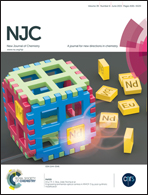Polyaniline electrospinning composite fibers for orthotopic photothermal treatment of tumors in vivo
Abstract
A nanocomposite fabricated by electrostatic spinning, which incorporated polyaniline nanoparticles into poly(ε-caprolactone) and gelatin (PG), was used to form nanofiber fabrics. Polyaniline nanoparticles have a strong optical absorption at near-infrared (NIR) wavelengths and can convert optical energy into thermal energy under 808 nm laser irradiation, allowing them to ablate tumor cells thermally. Pieces of the nanocomposite were surgically implanted into tumors in mice, and orthotopic photothermal therapy was performed. The experimental results in vivo suggested that polyaniline PG can inhibit tumor growth efficiently by converting optical energy into thermal energy to ablate tumor cells.


 Please wait while we load your content...
Please wait while we load your content...